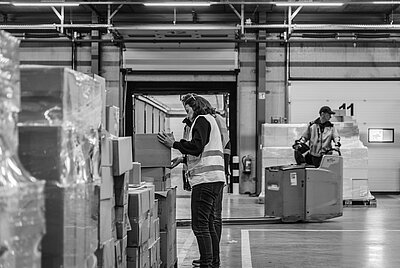Embrace AI
With endless opportunities for retailers, AI has become one of the biggest trends in retail investment and development.
We’ve written at length about the potential it can offer retailers, from customer service and personalisation to supply chain management and financial forecasting.
And one key theme underpins so many of its uses for retailers: resilience.
Retail markets are still turbulent, with luxury retail predicted to shrink in 2025, and the adoption of AI can help you maintain agility and responsiveness.
There are some critical ways for you to embed AI within your retail operations to help ready yourself for whatever challenges come your way.
Productivity – McKinsey & Company suggests that around 50% of retail activities can be automated. That presents retailers with an enormous opportunity to free up staff to focus on growth activities rather than day-to-day tasks. Embracing AI for productivity gains should be top of your list for 2025, from stock-level forecasting to answering frequently asked questions on your website.
Uniting front and back-end operations – being able to see your entire supply chain, from what’s in your warehouse and on the shop floor to the planned deliveries from your suppliers and transport partners, helps you make quicker decisions and forecast with accuracy. Using AI to help unite all these different insights and data sets can be transformational for retailers.
Integration – integrating AI across every retail business area will be key to creating agility across your workforce. Marketing, finance, logistics, sales, business development and in-store staff will all benefit from the adoption of AI that integrates across the business. Having access to data from different departments and tools that can help model and predict best outcomes will enable collaboration and problem-solving on a larger scale.
Leverage data
Leveraging data should be a priority for retailers. Ensuring you’ve got technology in place that can gather and condense data from multiple sources is paramount.
“The first thing any organisation should do is know what data it’s got. In what format is it? And what external data could augment it?” says John Straw, Senior Adviser to McKinsey & Company.
This data can be used as insight for building rewarding in-store experiences for your customers and even developing product lines and offers. Looking at your own data for trends and patterns and blending it with wider societal influences can enable you to create unique experiences, better product lines and even protect yourself against market fluctuations.
Liverpool ONE shopping destination in the UK has been using data insights from the flow of customers through the shopping centre, to help it understand visitor behaviour and inform business decisions. Iain Finlayson, Estate Director at Liverpool ONE, says: “With footfall data and insights at our fingertips, we will better understand the needs of our visitors, optimise our operations, and continue to provide a meaningful contribution to the city of Liverpool.”
Behavioural insights can also be valuable to aid with staff training and development. Showing employees where their time is best spent can boost their efficiency on the shop floor, for example having a clearer picture of when they should pack items or the best times for re-stocking and doing administrative tasks.
Re-commerce
Re-commerce in Europe is expected to grow 60% by 2025 (compared to 2021). Economic uncertainty, environmental concerns, and growing digital platforms have created the perfect storm for re-commerce to flourish.
Its tech-savvy audience has spending power, too. Gen Z and Millennials are currently leading the spending growth of re-commerce, giving retailers the perfect reason to embrace re-commerce technology. In the recent Euromonitor International’s Voice of the Consumer: Lifestyles Survey, the findings showed that ‘of those digital consumers who purchased second-hand products, more than half (51%) opted for the ease and accessibility of online transactions in 2023.’ Building platforms or partnering with technology companies that do can help you capitalise on one of the biggest growing retail trends.
British fashion and home retailer Oliver Bonas has linked up with Reskinned, a digital platform that works with brands to take back pre-loved fashion and sell on to someone new. When people send in their pre-loved items, they’re rewarded with credits for that particular brand so they can spend on something else.
C2C second-hand fashion marketplace, Vinted, grew its revenue by 61% in 2023 proving that the second-hand market is a thriving opportunity for retailers to explore.
Investing in technology can feel like a burden for retailers during turbulent times. But the focus must remain on the long-term to ensure your brand is best placed to respond to consumer demand and economic challenges.
Get a partner that will set you up for long-term success. Speak to our team on +31 (0) 88 494 20 80 or email us at online@worldpack.eu.


